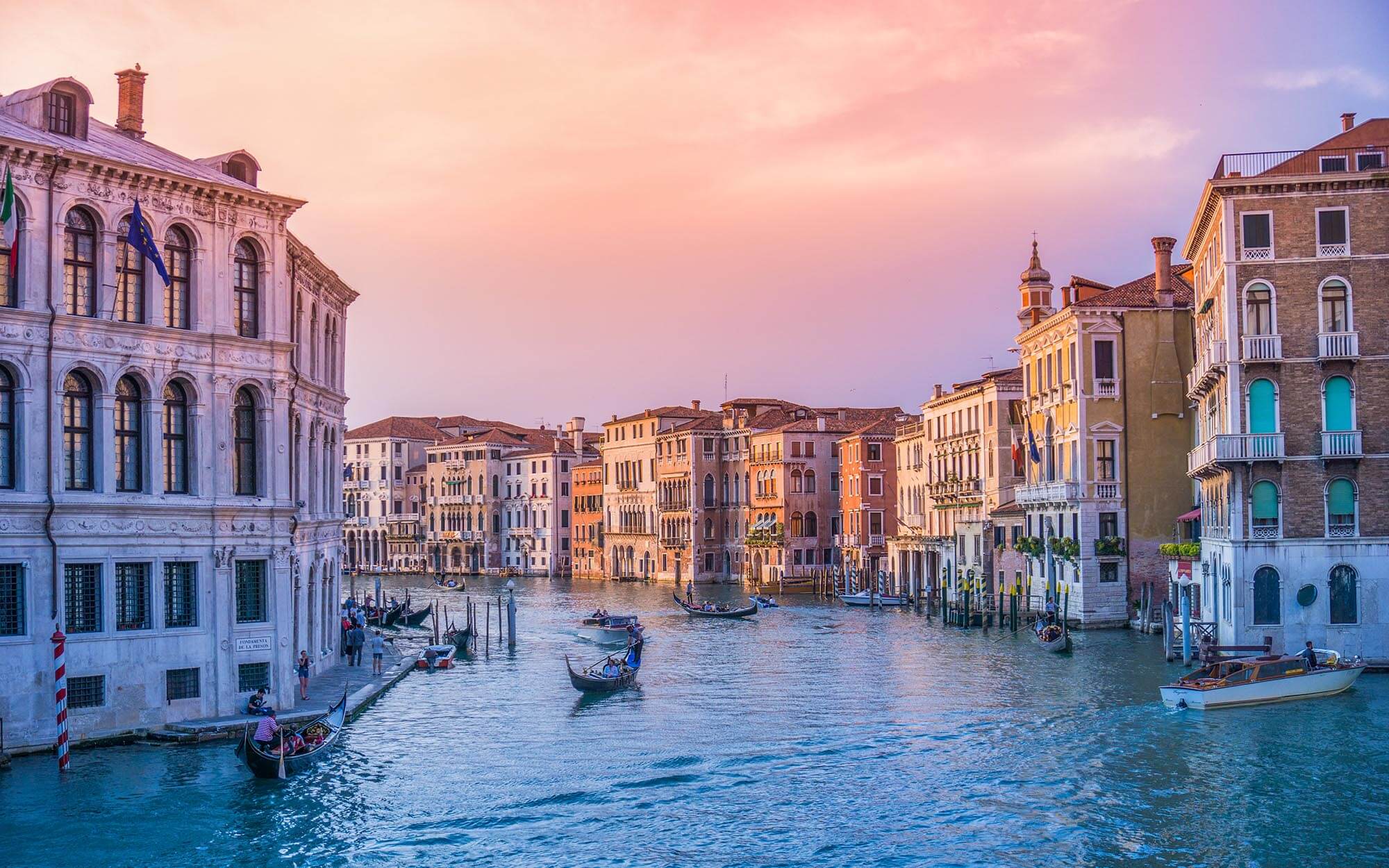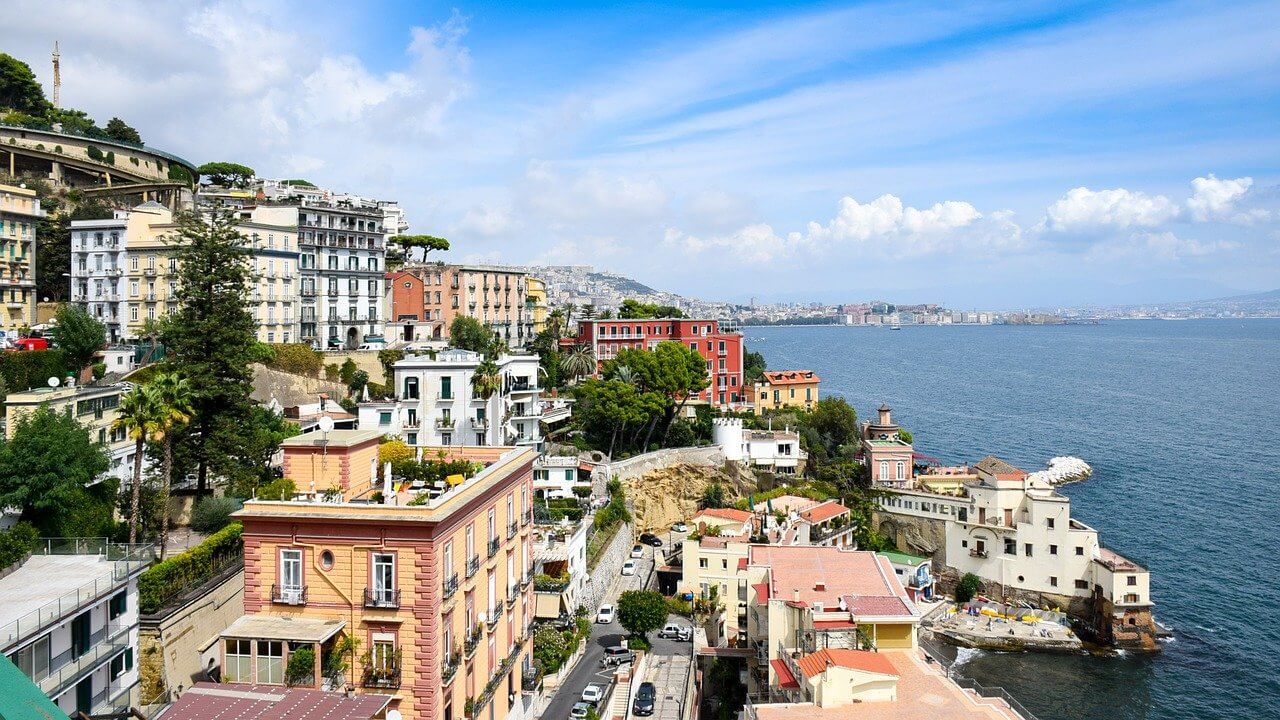Home>Weather and Climate>Understanding The Climate Of Italy: Weather Patterns And Seasons


Weather and Climate
Understanding The Climate Of Italy: Weather Patterns And Seasons
Published: March 2, 2024
Discover the diverse weather patterns and seasonal changes in Italy. Gain a deeper understanding of the climate with our comprehensive guide. Explore Italy's weather and climate today!
(Many of the links in this article redirect to a specific reviewed product. Your purchase of these products through affiliate links helps to generate commission for Temperatures.com, at no extra cost. Learn more)
Table of Contents
Introduction
Italy, a land of rich history, breathtaking landscapes, and delectable cuisine, is also renowned for its diverse climate and weather patterns. From the sun-kissed shores of the Amalfi Coast to the snow-capped peaks of the Alps, Italy's climate varies significantly across its regions, offering a tapestry of meteorological experiences. Understanding the nuances of Italy's weather and climate is essential for both travelers seeking the perfect time to visit and locals navigating their daily lives.
In this comprehensive exploration, we will delve into the geographical features that shape Italy's climate, the influence of the Mediterranean climate, the distinct weather patterns experienced throughout the country, and the captivating transitions of the four seasons. Additionally, we will examine the impact of climate change on Italy, shedding light on the evolving environmental dynamics that are shaping the nation's future.
Embark on this journey with us as we unravel the intricate tapestry of Italy's climate, unveiling the beauty and complexity that define the atmospheric character of this remarkable country.
Read more: Hawaii Weather Patterns Through Seasons
The Geography of Italy
Italy, a boot-shaped peninsula extending into the Mediterranean Sea, is a land of remarkable geographical diversity. Bordered by France, Switzerland, Austria, and Slovenia to the north, Italy is also home to two large islands, Sicily and Sardinia, as well as numerous smaller islands dotting the surrounding seas. The country's varied topography encompasses soaring mountain ranges, fertile plains, and stunning coastlines, each contributing to the intricate tapestry of Italy's climate.
The majestic Alps, Europe's most prominent mountain range, dominate Italy's northern border, sheltering the country from cold northern winds and influencing the climate of the region. To the south, the Apennine Mountains stretch like a backbone down the length of the Italian peninsula, shaping the weather patterns and contributing to the diverse microclimates found throughout the country.
Italy's extensive coastline, extending over 4,700 miles, plays a pivotal role in its climate. The warm waters of the Mediterranean Sea influence the coastal regions, moderating temperatures and fostering the development of the Mediterranean climate that characterizes much of Italy. This unique climate is marked by hot, dry summers and mild, wet winters, creating an idyllic environment for the cultivation of olives, citrus fruits, and vineyards that thrive in the Mediterranean sun.
The Po River Valley, nestled between the Alps and the Apennines, is a fertile plain that serves as the agricultural heartland of Italy. The valley's expansive plains and river networks contribute to the region's distinct climate, characterized by hot summers and cold, foggy winters. The Adriatic coast, on the eastern side of the country, experiences a climate influenced by the sea, with milder temperatures and less rainfall compared to the western regions.
The islands of Sicily and Sardinia boast their own unique geographical features, with rugged mountains, fertile plains, and stunning coastlines. These islands are influenced by the Mediterranean climate, with hot, dry summers and mild, wet winters, creating an inviting environment for visitors and locals alike.
Italy's diverse geography, encompassing mountains, plains, and coastlines, contributes to the intricate mosaic of climates and weather patterns that define this captivating country. From the snow-capped peaks of the Alps to the sun-drenched shores of Sicily, Italy's geography shapes the atmospheric tapestry that envelops this enchanting land.
The Influence of the Mediterranean Climate
The Mediterranean climate exerts a profound influence on Italy, shaping its weather patterns, agricultural practices, and overall way of life. This distinctive climate, characterized by hot, dry summers and mild, wet winters, is prevalent in the coastal regions of Italy and significantly impacts the country's ecosystems and cultural traditions.
During the summer months, the Mediterranean climate envelops Italy in a blanket of warmth and sunshine, creating ideal conditions for outdoor activities and leisurely beach days. The long, dry summers foster the growth of iconic Mediterranean flora, including olive trees, vineyards, and citrus orchards, which thrive in the sun-drenched landscape. The balmy temperatures and clear skies attract visitors from around the world, seeking to bask in the Mediterranean's golden rays and savor the laid-back ambiance that defines the coastal regions.
In contrast, the mild, wet winters bring a refreshing change to the Mediterranean climate, replenishing the land with much-needed rainfall. The winter months breathe new life into Italy's countryside, painting the rolling hills and valleys with vibrant shades of green. The precipitation sustains the agricultural heartland, nourishing the fertile soils that yield an abundance of crops, including wheat, vegetables, and aromatic herbs. The winter rains also contribute to the replenishment of Italy's water sources, ensuring the vitality of the country's rivers and lakes.
Beyond its impact on agriculture and tourism, the Mediterranean climate shapes the cultural fabric of Italy, influencing everything from culinary traditions to outdoor festivities. The abundance of fresh, sun-ripened produce inspires the vibrant Mediterranean cuisine, characterized by an emphasis on olive oil, fresh herbs, and locally sourced ingredients. Additionally, the climate sets the stage for a calendar of lively festivals and celebrations, where locals and visitors come together to revel in the warmth of the Mediterranean sun and the convivial spirit that permeates the coastal communities.
The influence of the Mediterranean climate extends beyond the borders of Italy, encompassing a region that shares similar climatic characteristics. This interconnectedness fosters a sense of kinship among Mediterranean nations, as they collectively embrace the rhythms of the sun-drenched summers and the rejuvenating embrace of the winter rains.
In essence, the Mediterranean climate is not merely a meteorological phenomenon; it is a defining element of Italy's identity, infusing the country with a sense of vitality, abundance, and timeless allure. Embracing the essence of the Mediterranean climate, Italy beckons travelers to immerse themselves in its sun-soaked landscapes, savor its bountiful harvests, and partake in the timeless traditions that have flourished under the Mediterranean sun.
Weather Patterns in Italy
Italy's diverse geography and the influence of the Mediterranean climate give rise to a wide array of weather patterns that captivate both residents and visitors throughout the year. From the snow-capped peaks of the Alps to the sun-drenched shores of Sicily, each region of Italy experiences its own unique meteorological phenomena, creating a tapestry of atmospheric diversity.
In the northern regions, the majestic Alps play a pivotal role in shaping the weather patterns. During the winter months, these towering mountains are blanketed in snow, creating a haven for winter sports enthusiasts and transforming the alpine landscapes into a winter wonderland. The crisp mountain air and pristine snowfall draw visitors from far and wide, seeking the exhilaration of skiing, snowboarding, and other snow-centric activities. As spring unfolds, the Alps undergo a remarkable transformation, with the snow giving way to lush meadows adorned with vibrant wildflowers, signaling the arrival of a new season.
Moving southward, the Po River Valley experiences distinct weather patterns characterized by hot summers and cold, foggy winters. The fertile plains and river networks contribute to the region's unique microclimate, fostering the cultivation of crops such as rice, corn, and sunflowers. The summer heat blankets the valley, creating an ideal environment for the ripening of fruits and the flourishing of vineyards, while the winter fog adds a touch of mystique to the landscape, shrouding the fields in an ethereal veil.
Along the Adriatic coast, the influence of the sea moderates the climate, resulting in milder temperatures and less rainfall compared to the western regions. The coastal areas enjoy a pleasant maritime climate, with refreshing sea breezes providing respite from the summer heat and contributing to the cultivation of coastal vineyards and olive groves.
In the central regions, including Tuscany and Umbria, the rolling hills and picturesque countryside are shaped by a temperate climate that transitions seamlessly through the seasons. Spring brings a burst of color as the hillsides are adorned with blooming wildflowers, while the golden hues of autumn cast a spellbinding glow over the vineyards and olive orchards.
As we journey south to the islands of Sicily and Sardinia, we encounter a climate that embodies the essence of the Mediterranean. The sun-drenched shores and azure waters create an idyllic setting for beachgoers and water enthusiasts, while the mild winters offer a welcome escape for those seeking a reprieve from the colder climates of the north.
In essence, Italy's weather patterns are as diverse and captivating as its landscapes, offering a rich tapestry of meteorological experiences that unfold across the country's varied regions. Whether it's the snow-draped Alps, the sun-soaked coastlines, or the verdant countryside, Italy's weather patterns invite exploration and appreciation, beckoning travelers to immerse themselves in the atmospheric wonders that define this remarkable country.
The Four Seasons in Italy
Italy's geographical diversity and Mediterranean climate give rise to distinct and captivating transitions through the four seasons, each offering a unique tapestry of natural beauty and cultural experiences. From the vibrant blooms of spring to the sun-drenched days of summer, the golden hues of autumn, and the tranquil charm of winter, Italy's seasons unfold with a captivating allure that beckons travelers and captivates locals alike.
Spring breathes new life into Italy's landscapes, painting the countryside with a kaleidoscope of colors as wildflowers bloom across the rolling hills and valleys. The air is filled with the sweet fragrance of blossoming trees and the vibrant energy of nature awakening from its winter slumber. The mild temperatures and longer daylight hours create an ideal environment for outdoor exploration, whether it's strolling through blooming gardens, embarking on scenic hikes, or savoring al fresco dining amidst the blossoming beauty of the Italian countryside.
As spring transitions into summer, Italy basks in the golden glow of the Mediterranean sun. The long, sun-drenched days beckon beachgoers to the stunning coastal stretches, where azure waters lap against sandy shores, inviting leisurely dips and sun-kissed relaxation. The vibrant energy of summer festivals and outdoor concerts fills the air, offering a glimpse into Italy's rich cultural heritage and the joyous celebrations that mark the season. From the bustling streets of Rome to the tranquil villages of Tuscany, summer in Italy is a time of vitality, warmth, and boundless charm.
Autumn casts a spellbinding transformation across Italy, as the landscapes are adorned with a symphony of golden hues. The vineyards and olive groves take on a rich, amber glow, offering a picturesque backdrop for wine tasting and leisurely countryside drives. The air is infused with the earthy scents of harvest, as farmers gather the fruits of their labor, and markets brim with an abundance of seasonal produce. Autumn in Italy is a time of abundance and transition, where the golden light casts a timeless enchantment over the country's diverse regions.
Winter brings a serene tranquility to Italy, as snow-capped peaks and cozy alpine villages create a picturesque winter wonderland. The crisp mountain air invites outdoor enthusiasts to partake in skiing, snowshoeing, and other snow-centric activities, while the cities come alive with festive decorations and holiday markets. In the southern regions, the mild winters offer a peaceful retreat, where historic sites and cultural treasures can be explored without the summer crowds, and the warmth of Italian hospitality shines amidst the quieter, yet equally captivating, winter landscapes.
In essence, the four seasons in Italy weave a captivating tapestry of natural beauty, cultural richness, and atmospheric diversity. Each season offers a unique invitation to immerse oneself in the timeless allure of Italy, where the ever-changing landscapes and traditions unfold with a grace and charm that captivate the heart and soul.
Read more: Italy’s July Weather Guide
Climate Change and its Impact on Italy
Climate change poses a significant and far-reaching impact on Italy, manifesting in various environmental, social, and economic dimensions. The Mediterranean climate, which has long defined Italy's atmospheric character, is undergoing discernible shifts, presenting both challenges and opportunities for the nation and its inhabitants.
Rising temperatures and altered precipitation patterns are reshaping Italy's ecosystems, affecting agricultural practices, biodiversity, and water resources. The gradual warming of the Mediterranean Sea has implications for marine life and coastal dynamics, influencing fishing industries and coastal communities. Additionally, the increased frequency of extreme weather events, such as heatwaves and intense rainfall, poses risks to infrastructure, public health, and natural habitats.
The agricultural sector, a cornerstone of Italy's economy and cultural heritage, faces the complexities of adapting to changing climatic conditions. Shifts in growing seasons, water availability, and the prevalence of pests and diseases necessitate innovative strategies to safeguard crop yields and preserve traditional farming practices. Furthermore, the renowned vineyards and olive groves, which have flourished under the Mediterranean sun, confront the need for sustainable viticulture and adaptation to evolving climate patterns.
Italy's rich cultural heritage and historical sites are also vulnerable to the impacts of climate change. Rising sea levels and coastal erosion threaten iconic landmarks and archaeological treasures located in coastal areas, prompting conservation efforts and adaptive measures to protect these invaluable cultural assets.
The imperative to mitigate and adapt to climate change has spurred initiatives across Italy, encompassing renewable energy development, sustainable urban planning, and conservation efforts. The transition towards renewable energy sources, such as solar and wind power, reflects Italy's commitment to reducing greenhouse gas emissions and fostering a more sustainable energy landscape.
Furthermore, the integration of climate resilience into urban design and infrastructure projects aims to enhance the adaptive capacity of cities and communities, mitigating the risks associated with extreme weather events and urban heat islands. Conservation efforts, including reforestation projects and the preservation of natural habitats, contribute to safeguarding Italy's rich biodiversity and ecological balance in the face of climate change.
In essence, climate change presents a multifaceted challenge for Italy, necessitating proactive measures to mitigate its impacts and foster resilience across various sectors. The nation's response to climate change reflects a commitment to preserving its natural heritage, cultural legacy, and economic vitality in the face of evolving environmental dynamics. Through concerted efforts and innovative solutions, Italy endeavors to navigate the complexities of climate change while embracing a sustainable and resilient future.
Conclusion
In conclusion, Italy's weather and climate embody a captivating tapestry of diversity, shaped by its varied geography, the influence of the Mediterranean climate, and the transitions through the four seasons. From the snow-capped peaks of the Alps to the sun-drenched shores of Sicily, each region offers a unique atmospheric experience that captivates the senses and beckons exploration.
The geographical features of Italy, including the majestic Alps, fertile plains of the Po River Valley, and the stunning coastlines, contribute to the intricate mosaic of climates and weather patterns that define this enchanting country. The influence of the Mediterranean climate infuses Italy with a sense of vitality, abundance, and timeless allure, shaping its ecosystems, cultural traditions, and culinary heritage.
Italy's diverse weather patterns, from the alpine landscapes to the sun-kissed coastlines, offer a rich tapestry of meteorological experiences that unfold across the country's varied regions. The transitions through the four seasons, each with its own unique charm and cultural significance, invite travelers to immerse themselves in the timeless allure of Italy.
Furthermore, climate change presents a multifaceted challenge for Italy, impacting its ecosystems, agriculture, cultural heritage, and economy. The nation's proactive measures and innovative solutions reflect a commitment to preserving its natural heritage, cultural legacy, and economic vitality in the face of evolving environmental dynamics.
In essence, Italy's weather and climate are not merely meteorological phenomena; they are integral elements of the country's identity, infusing it with a sense of vitality, abundance, and timeless allure. Embracing the essence of Italy's climate, travelers are invited to immerse themselves in its atmospheric wonders, savor its bountiful harvests, and partake in the timeless traditions that have flourished under the Mediterranean sun.














